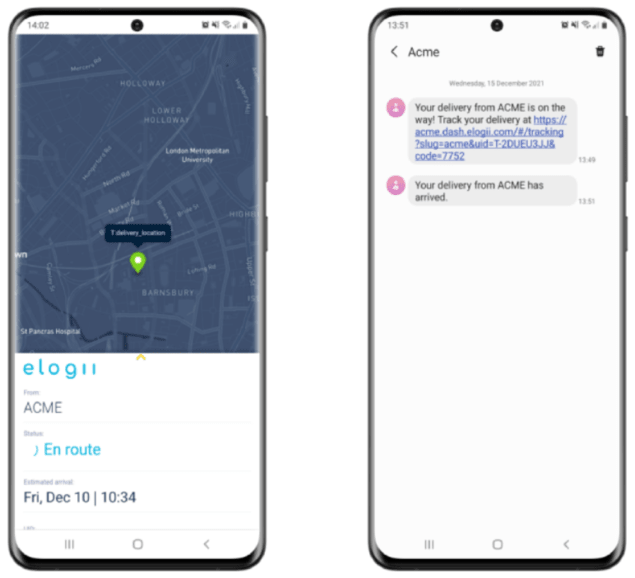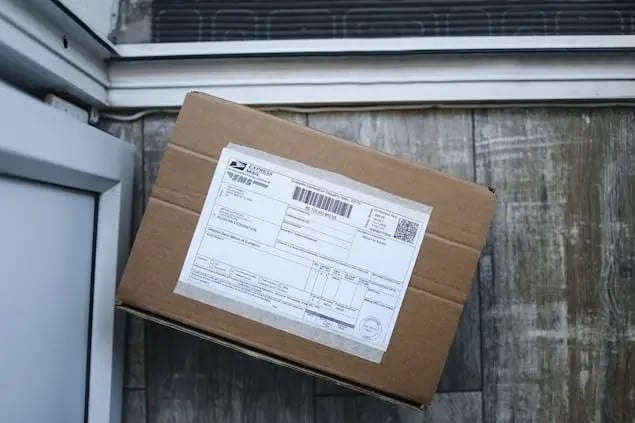Today, tracking last mile carriers is important for fixing problems and making customers happy. It shows where packages are in real-time so people know when to expect them. It also helps businesses find delivery issues to make sure packages arrive on time and for less money.
With a good tracking system, companies save money and keep customers satisfied
What is Last Mile Tracking?
Last mile tracking lets customers see where their package is during the final part of delivery, from the distribution center to their door.
It gives real-time updates on the package’s status, including the expected delivery date and time, along with any delays or problems.
Why Last Mile Delivery Tracking Matters
- Transparency: Last mile tracking gives customers real-time updates on where their package is when it’s expected to arrive, and any delays. This clear communication builds trust in the delivery process.
- Customer satisfaction: Customers feel more at ease with accurate and timely delivery info. Knowing when their package will arrive helps reduce stress and frustration.
- Better delivery efficiency: Last mile tracking helps drivers by providing real-time updates on traffic and route changes. This allows them to adjust their routes, improving on-time deliveries and shortening delivery times.
- Improved inventory management: Businesses can enjoy last mile tracking by getting real-time delivery details. This helps them manage stock levels better and avoid running out of products.
What is a Last Mile Tracking Number?

A last mile tracking number is also called a final mile or delivery confirmation number. It is a unique code used to track a package from the transport hub to its final destination.
The "last mile" refers to the final step in the delivery, where the package is taken from a local center to the recipient’s address. This tracking number helps track the package during this key stage to ensure it arrives on time and in good shape.
Usually, the shipping company provides the last mile tracking number. Customers can use it to check the status of their package through online portals or apps. This keeps them updated on the delivery time and helps them plan to receive the package.
How to Track a Last Mile Carrier
To track a last mile carrier, follow these simple steps:
- Get the tracking number: The shipping company or the retailer will give you a tracking number. If you don’t have it, reach out to them to get it.
- Go to the carrier’s website: Once you have the tracking number, visit the website of the carrier handling the final delivery. For example, if it’s being delivered by USPS, go to the USPS site.
- Enter the tracking number: Find the "track a package" option on the carrier's website, and enter the tracking number to see your package's status.
- Track the package: After entering the tracking number, you can see where your package is and its current status. This might include when it was picked up, when it reached the local center, and when it’s expected to arrive at your address.
- Contact the carrier: If you have questions or concerns, you can reach out to the carrier directly using the contact info on their website.
Remember, tracking info might not always be updated in real-time, and delays can happen. If you’re worried about your package, it’s best to contact the carrier for more details.
Challenges with Last Mile Tracking
While last mile tracking has many benefits, it also comes with some challenges. Here are a few key ones:
- Limited visibility: A big challenge is the lack of clear visibility on delivery routes and traffic. This makes it hard to predict delivery times accurately and ensure packages arrive on time.
- Communication issues: Problems with communication between drivers and dispatchers can also cause delays. Without real-time updates or if communication breaks down, deliveries can face setbacks.
- Technical issues: Last mile tracking systems can run into problems like network outages or software glitches. These issues can stop companies from getting real-time data and cause delays or inaccurate delivery times.
- Security concerns: Protecting customer data and other sensitive info from cyber threats is another challenge with last mile tracking.
- Cost: Setting up last mile tracking can be pricey. That is especially true for small businesses that might not have the budget for the necessary technology.
- Customer expectations: Customers often expect real-time updates and may get frustrated if they don’t receive accurate delivery information.
Solutions for Last Mile Tracking
- GPS tracking: GPS technology helps track delivery vehicles and packages in real-time. This lets companies monitor their fleet, improve routes, and give customers accurate delivery times.
- Mobile apps: Mobile apps can give drivers real-time updates on traffic and route changes. This helps them adjust their schedules and improve on-time deliveries.
- Better communication: Good communication between drivers and dispatchers is key. Companies can use tools like instant messaging and voice calls to keep both sides connected.
- Cloud-based software: Cloud-based platforms give delivery companies a central place to manage everything, including last mile tracking. This helps streamline operations, cut costs, and boost efficiency.
- Smart lockers: Smart lockers offer a convenient option for customers who can't be home to receive packages. These lockers can be placed in easy-to-reach spots and accessed with a code or mobile app.
- Blockchain technology: Blockchain provides a secure and clear way to track last mile deliveries. It helps prevent fraud, improves transparency, and lowers the risk of security issues.
Benefits of Last Mile Tracking

- Better customer experience: Last mile tracking lets customers see their packages in real-time. That gives them more control and peace of mind. This boosts satisfaction and builds loyalty.
- Higher efficiency: Delivery companies can use tracking to optimize routes and schedules. It helps to cut down on time and costs for last mile deliveries.
- Fewer delivery mistakes: Tracking helps lower the chances of delivery errors, like missed deliveries or package theft, making the service more reliable.
- Smarter use of resources: By tracking vehicles and packages in real-time, companies can make better use of delivery vehicles and staff. That, in turn, helps save money and improves efficiency.
- Greater supply chain visibility: Last mile tracking gives more control over the whole supply chain, from the warehouse to the customer, helping to improve efficiency and cut costs.
Final Mile Tracking Technologies
There are several tracking technologies commonly used for last mile deliveries, including:
- GPS tracking: GPS (Global Positioning System) is commonly used to track delivery vehicles and packages in real-time. It helps companies track their vehicles, improve routes, and give accurate delivery times to customers.
- RFID tags: RFID (Radio Frequency Identification) tags can track packages as they move through the supply chain. These tags are scanned at different checkpoints to give real-time updates on where the package is and its status.
- Barcodes: Barcodes are widely used for tracking packages. They can be scanned at different points during the delivery process, giving real-time updates on the package’s location and status. This helps companies provide accurate delivery times.
- Mobile apps: Mobile apps give drivers real-time updates on traffic and route changes. It helps them adjust routes and improve on-time deliveries.
- Electronic logging devices: ELDs track how many hours commercial drivers have worked. These devices ensure drivers follow regulations and provide real-time data on their location and activities.
- Internet of Things (IoT): IoT technology uses sensors and connected devices to track packages. It can give real-time updates on location, temperature, and other important factors that affect delivery.
Practical Examples
Here are some examples that show the benefits of last mile delivery tracking:
- Amazon: Amazon, a major e-commerce retailer, uses advanced last mile tracking technologies. It helps to give customers real-time updates on package status and location. They’ve built their own logistics network, using GPS tracking, mobile apps, and other tools to optimize delivery routes and schedules. By using these technologies, Amazon has improved delivery times and lowered costs, helping them stay competitive in the busy e-commerce market.
- UPS: UPS is a global package delivery company that uses various tracking tools to improve how it works. They use RFID tags to track packages as they move through their system, giving real-time updates on location and status. UPS also uses GPS tracking and mobile apps to plan delivery routes better, which helps speed up deliveries and keep customers happy.
- Domino's Pizza: Domino's is a popular pizza delivery chain that uses last mile tracking to improve its delivery times and accuracy. They rely on GPS tracking and mobile apps to plan routes more efficiently, cutting down on delivery times and boosting customer satisfaction. Domino's also has its in-house tracking system that provides real-time updates on delivery status.
- DHL: DHL is a global logistics company that uses last mile tracking tools to improve its operations. DHL uses GPS tracking, mobile apps, and IoT devices to optimize routes and delivery schedules. They’ve also built their own logistics platform that gives real-time updates on package location and status. With these technologies, DHL has sped up deliveries, lowered costs, and stayed competitive in the industry.
Concluding Thoughts
Last mile delivery tracking is essential in logistics because it helps speed up deliveries, keeps customers happy, and lowers costs.
By using the latest tracking technologies and management methods, delivery companies can run their operations more smoothly and offer a better experience for customers. Challenges do exist when it comes to last mile tracking. These include the high costs of new technologies and the need to balance accuracy and efficiency. Yet, the benefits outweigh these challenges.
In the end, companies that invest in last mile tracking will be better equipped to thrive in the competitive e-commerce and logistics markets. They will also be able to meet their customers' changing needs in the future.